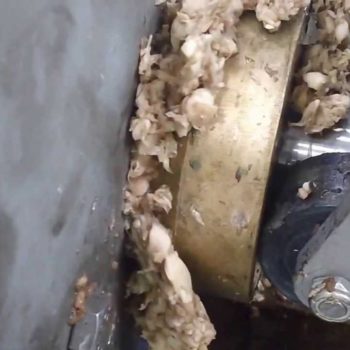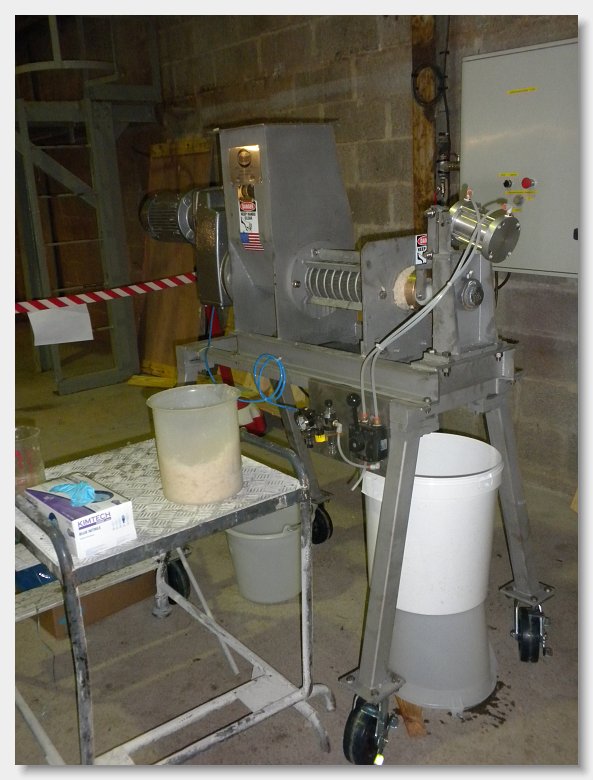May 18, 1993
Recently we had a chance to visit fruit juice producers in western New York, along the shore of Lake Erie. This is an area known for growing grapes and deciduous fruit. The plants we visited are using Vincent screw presses in the production of grape, cranberry, prune and apple juice. They both bottle and can these juices, operating on a year-round basis.
To make grape juice they dump one ton bins of grapes into a screw that feeds into a de-stemmer. This is a horizontal drum about 5’ in diameter with 7/8” perforations. The grapes and some juice fall through the perforations. The stems and trash come out the far end of the drum. From there a screw takes the stems to a dumpster; these are land-spread in the orchards.
From the de-stemmer the grapes are pumped, by a piston pump, to a heat exchanger where they are heated to about 160°F. From there they go to a trough where “paper” press-aid is added.
This press aid comes in the form of sheets of pulp board. They use a high shear agitator to tear up the paper and mix it in with the grapes. They use 100# of paper per 1000 gallons of juice (if a gallon weighs around nine pounds that is about 1%).
Rice hulls (a second, cheaper press aid), along with enzymes, are also added. The material is agitated in a cook tank and then pumped to a screen cage de-juicer. It is about three feet in diameter and has a fairly fine screen.
Pomace from the end of the screen cage de-juicer is fed with a screw conveyor to the hopper of the Vincent press. They have variable speed presses in order to switch from one type of fruit to another. Also, they have their presses equipped with the rotating cone option because of the slippery nature of the material they are pressing. This material tends to channel, and the rotating cone counteracts this tendency.
The press liquor is pumped, along with the juice from the screen cage de-juicer, to the next stages of juice clarification and bottling.
The cake from the press is sent to landfill.
Issue 3



